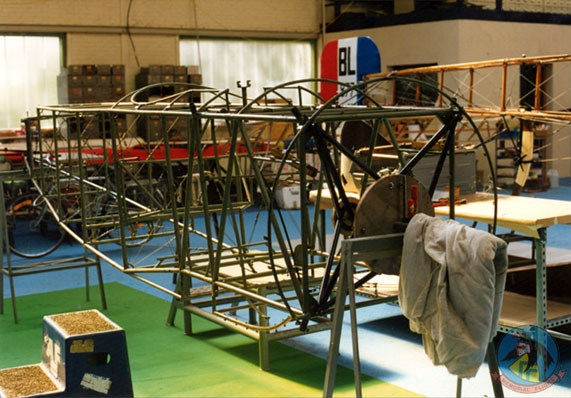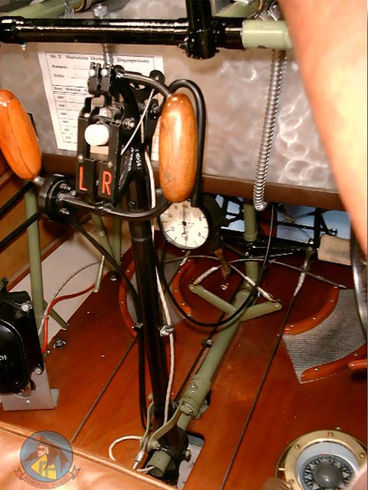

The Fokker Dr.I was the result of an Idflieg specification for a triplane, similar to the captured Sopwith. This type of wing arrangement allowed a light and compact, thus very manoeuvrable, aircraft.
The Dr.I was designed and built in record time by chief designer Rheinhold Platz, following his usual type of construction with the fuselage made of welded steel tube covered in fabric. All control surfaces and tailplane were also of welded steel tube, fabric covered construction. The three one-piece straight wooden wings formed a sturdy fabric covered structure and all movable control surfaces were aerodynamically balanced, making control forces light on all three axis. The landing gear axle was faired with plywood adding even more lift to the aeroplane.
The 2.62m wooden propeller connected to the Oberursel 110 hp engine (a copy of the french Gnome, later Le Rhône) gave the machine outstanding performance for its time, with excellent climbing ability at low or medium altitude. The Dr.I was a remakable fighter in dogfights due to its refined aerodynamics, although it didn't have the best of top speed and its performance was seriously impaired at altitudes. In fact this was the main problem with all rotary-engined aircraft. The service ceiling was not over 4000m, 2000 less than its contemparies (SPAD or SE5a). It is the reason why its operational career was so short.
A newcomer to the front at the end of August 1917, it was retired from front line service in May 1918. Some aircrafts were reallocated to home defence squadrons and some went to fighter schools. The total production amounted to 320. This aeroplane would certainly be not as famous as it is now without the famous Baron von Richtofen who flew several examples.
Fokker Dr.I reproduction

The present aircraft is a reproduction started in Germany by Eberhard Fritsch, completed and flown by Memorial Flight.
Great care was taken to ensure the aeroplane was built to original specifications. The engine and instruments are original.
The first flight took place on May 3rd 1991.
Previously painted to represent Karl Bolle's aircraft, it was overhauled and recovered between 1997 and 2002. The aeroplane was then repainted to sport the colours of Dr.I 489/17 (W.n. 2215) of Jasta 14 in 1918.

The overhaul (1997 - 2002)
Building the Fokker Dr.I (1989 - 1991)
Photoscopes
Photoscope
Cockpit.
Photoscope
Spandau machine guns.
Photoscope
Gunsight and flare gun.
Photoscope
Fuel gauge.
Photoscope
Anemometer.
Photoscope
Manufacturer plate and top wing markings.
Photo Album
Videos
SE5a/Fokker Dr.I : Take off, patrol, landing. June 2005 (1min47s)
Fokker Dr.I : Take off, flight, landing. June 2003 (1min52s)
Specifications
Length: 5.77 m
Wingspan: 7.20 m
Surface: 18.70 m²
Weight: 590 kg
Engine: 1x 110hp Oberursel rotary engine
Speed: max. 180 km/h
Endurance: 1 h 30
Crew: 1
Armament: 2x 7.92mm LMG 08/15 "Spandau" machine guns -1000 rounds
Pressbook
Article: SPAD XIII contre Fokker Dr.I / Fana de l'Aviation (French), 5 pages





Article: Revival der tollkühnen Kisten / Fliegermagazin, Juin 2000 (German), 1 page













































































